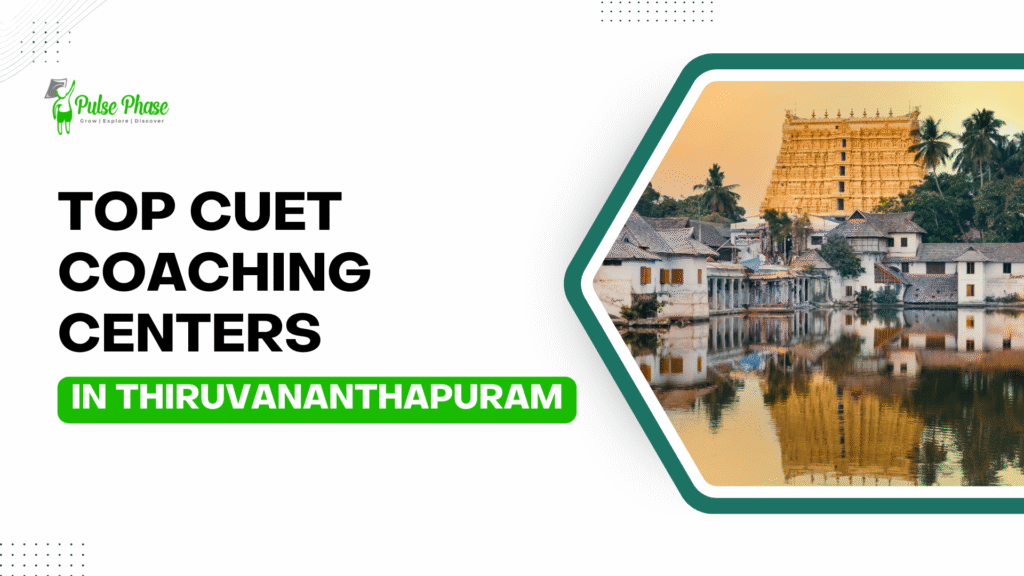UPSC CSE is one of the hardest exams in the country. Every year lakhs of students appear for the exam to become an IAS officer but it’s not an easy task. It needs lots of hard work, consistency, and dedication. Optional paper plays an important role in making a good rank. The right selection of optional papers is very important. The choice of optional paper should depend on your interest and liking for the subject. Mathematics has always been the most chosen subject among UPSC students.
Maths is one of the toughest subjects but it’s the most scoring subject. By the point-to-point marking of Maths, students get a chance to secure full marks.
Here, in the article, we will discuss Mathematics as an optional subject for UPSC and its preparation strategy.
Syllabus of Mathematics optional paper
Paper-I
- Linear algebra
Vector spaces over R and C, linear dependence and independence, subspaces, bases, dimension; linear transformations, rank and nullity, matrix of a linear transformation. Algebra of Matrices; row and column reduction, echelon form, congruence and similarity; rank of a matrix; inverse of a matrix; solution of system of linear equations; eigenvalues and eigenvectors, characteristic polynomial, Cayley-Hamilton theorem, symmetric, skew-symmetric, Hermitian, skew-Hermitian, orthogonal and unitary matrices and their eigenvalues.
- Calculus
Real numbers, functions of a real variable, limits, continuity, differentiability, mean value theorem, Taylor’s theorem with remainders, indeterminate forms, maxima and minima, asymptotes; curve tracing; functions of two or three variables: limits, continuity, partial derivatives, maxima, and minima, Lagrange’s method of multipliers, Jacobian. Riemann’s definition of definite integrals; indefinite integrals; infinite and improper integrals; double and triple integrals (evaluation techniques only); Areas, surface, and volumes.
- Analytic Geometry
Cartesian and polar coordinates in three dimensions, second-degree equations in three variables, reduction to canonical forms, straight lines, shortest distance between two skew lines; plane, sphere, cone, cylinder, paraboloid, ellipsoid, hyperboloid of one and two sheets and their properties.
- Ordinary Differential Equations
Formulation of differential equations; equations of the first order and first degree, integrating factor; orthogonal trajectory; equations of first order but not of first degree, Clairaut’s equation, singular solution. Second and higher-order linear equations with constant coefficients, complementary function, particular integral, and general solution. Second-order linear equations with variable coefficients, Euler-Cauchy equation; determination of complete solution when one solution is known using the method of variation of parameters. Laplace and inverse Laplace transforms and their properties; Laplace transforms of elementary functions. Application to initial value problems for 2nd order linear equations with constant coefficients.
- Dynamics & Statics
Rectilinear motion, simple harmonic motion, motion in a plane, projectiles; constrained motion; work and energy, conservation of energy; Kepler’s laws, orbits under central forces. Equilibrium of a system of particles; work and potential energy, friction; common catenary; principle of virtual work; stability of equilibrium, equilibrium of forces in three dimensions.
- Vector Analysis
Scalar and vector fields, differentiation of vector field of a scalar variable; gradient, divergence and curl in cartesian and cylindrical coordinates; higher-order derivatives; Vector identities and vector equations. Application to geometry: curves in space, curvature, and torsion; Serret-Frenet’s formulae. Gauss and Stokes’ theorems, Green’s identities.
PAPER-II
- Algebra
Groups, subgroups, cyclic groups, cosets, Lagrange’s Theorem, normal subgroups, quotient groups, homomorphism of groups, basic isomorphism theorems, permutation groups, Cayley’s theorem. Rings, subrings and ideals, homomorphisms of rings; Integral domains, principal ideal domains, Euclidean domains, and unique factorization domains; Fields, quotient fields.
- Real Analysis
Real number system as an ordered field with the least upper bound property; Sequences, the limit of a sequence, Cauchy sequence, completeness of real line; Series and its convergence, absolute and conditional convergence of series of real and complex terms, rearrangement of series. Continuity and uniform continuity of functions, properties of continuous functions on compact sets. Riemann integral, improper integrals; Fundamental theorems of integral calculus. Uniform convergence, continuity, differentiability, and integrability for sequences and series of functions; partial derivatives of functions of several (two or three) variables, maxima, and minima.
- Complex Analysis
Analytic functions, Cauchy-Riemann equations, Cauchy’s theorem, Cauchy’s integral formula, power series representation of an analytic function, Taylor’s series; singularities; Laurent’s series; Cauchy’s residue theorem; contour integration.
- Linear Programming
Linear programming problems, basic solution, basic feasible solution, and optimal solution; Graphical method and simplex method of solutions; duality. Transportation and assignment problems.
- Partial differential equations
Family of surfaces in three dimensions and formulation of partial differential equations; solution of quasilinear partial differential equations of the first order, Cauchy’s method of characteristics; Linear partial differential equations of the second order with constant coefficients, canonical form; equation of a vibrating string, heat equation, Laplace equation, and their solutions.
- Numerical Analysis and Computer programming
Numerical methods: solution of algebraic and transcendental equations of one variable by bisection, Regula-Falsi, and Newton-Raphson methods; solution of a system of linear equations by Gaussian elimination and Gauss-Jordan (direct), Gauss-Seidel(iterative) methods. Newton’s (forward and backward) interpolation, Lagrange’s interpolation. Numerical integration: Trapezoidal rule, Simpson’s rules, Gaussian quadrature formula. Numerical solution of ordinary differential equations: Euler and Runge Kutta-methods. Computer Programming: Binary system; Arithmetic and logical operations on numbers; Octal and Hexadecimal systems; Conversion to and from decimal systems; Algebra of binary numbers. Elements of computer systems and concept of memory; Basic logic gates and truth tables, Boolean algebra, normal forms. Representation of unsigned integers, signed integers and reals, double precision reals and long integers. Algorithms and flow charts for solving numerical analysis problems.
- Mechanics and Fluid Dynamics
Generalized coordinates; D’ Alembert’s principle and Lagrange’s equations; Hamilton equations; Moment of inertia; Motion of rigid bodies in two dimensions. Equation of continuity; Euler’s equation of motion for inviscid flow; Stream-lines, path of a particle; Potential flow; Two-dimensional and axisymmetric motion; Sources and sinks, vortex motion; Navier-Stokes equation for a viscous fluid.
Preparation strategy for Mathematics optional paper for UPSC
Mathematics is most conceptual in nature. You need to focus on concepts of every topic. You can crack this exam by following simple methodologies. Here you can find the most useful strategies to prepare for a Mathematics Optional Subject paper in the UPSC IAS exam.
1. Understand the syllabus
First, you need to understand the syllabus. First, you need to collect an updated syllabus from authentic sources. After collecting the syllabus you need to understand the syllabus carefully.
2. Make a suitable study plan
Once you understand the syllabus you need to prepare a suitable study plan at your convenience. Your study plan must contain a slot for proper revision after every topic. Your study plan for the optional paper should be aligned with other parts of the main exam. This is advised because you have limited time to prepare for the mains exam.
3. Practice the important topics
Once you go through the complete syllabus then you come to know that some topics usually have repetitive patterns or they have a higher chance to come into the exam. You need to focus on such topics. This may lead to a higher chance to solve similar questions easily.
4. Solve previous year question papers
solving the previous year’s question papers can be a good strategy to clear exams. Experts advise solving and analyze the previous year’s papers in a similar exam-like environment. By solving the previous year’s papers you can have an idea of the pattern and type of questions. At the same time, you can develop time and stress management skills.
5. Study with best books
Books play a very important role in the success of Aspirants. Aspirants must refer to genuine books. Always study with the best books. Aspirants must have some reference books to study. Don’t collect too many books. You will get confused by reading many books. Keep selected books for study well.
6. Join coaching if needed
Coaching classes play an important role in UPSC examinations. If you have the ability and good knowledge, you can prepare well by self-study. When you need guidance, join a good coaching group. There are many coaches which teach online also. If you don’t want to join offline, you can attend online also. In my opinion, Legacy IAS Academy Bangalore is the best IAS coaching in Bangalore. They provide the best online and offline classes for IAS aspirants.
Advantages of taking Mathematics as an optional paper for UPSC
1. Short syllabus
The syllabus of maths is short as compared to other optional subjects.it needs less time to prepare. All you need to do is make a study plan and prepare accordingly.
2. Most scoring subject
Maths is one of the most scoring Mathematics Optional subjects in the UPSC examination. There are no long theories to prepare. You need to understand the concepts and solve the problems accordingly. If you have good knowledge of solving problems with accuracy, you can score maximum marks in examinations.
3. Static subject
Mathematics Optional subject has a static syllabus. If you’ve studied this subject in your graduation, you just need to recall the concepts and keep revising. The syllabus is not linked to current affairs, so you don’t need to update your notes for revision.
4. Less time to prepare
The syllabus of maths is short so it needs less time in preparation. You can use your remaining time in the preparation of other subjects.
5. Less competition
Fewer candidates choose maths as an optional subject. So, you will face less competition. The questions asked in the examinations are straightforward. If you like the subject and have an interest in solving problems, you can score well.
6. Predictable answer
You can predict your performance after the examination. If the answer is correct, you will get full marks. So you can predict how many marks you can get in an exam.
Math subjects need patience and a relaxed mind. If you get stressed, there’s a high chance of making mistakes. Practice is the most important aspect of maths preparation. When you are appearing in IAS exam papers, don’t worry about scaling and moderation. Your aim should be to score as much as you can. Always check your answers once after completing the question paper. As math is a logical subject, don’t write unnecessary things. Have faith in your preparation, you will achieve success.
Read More:-




